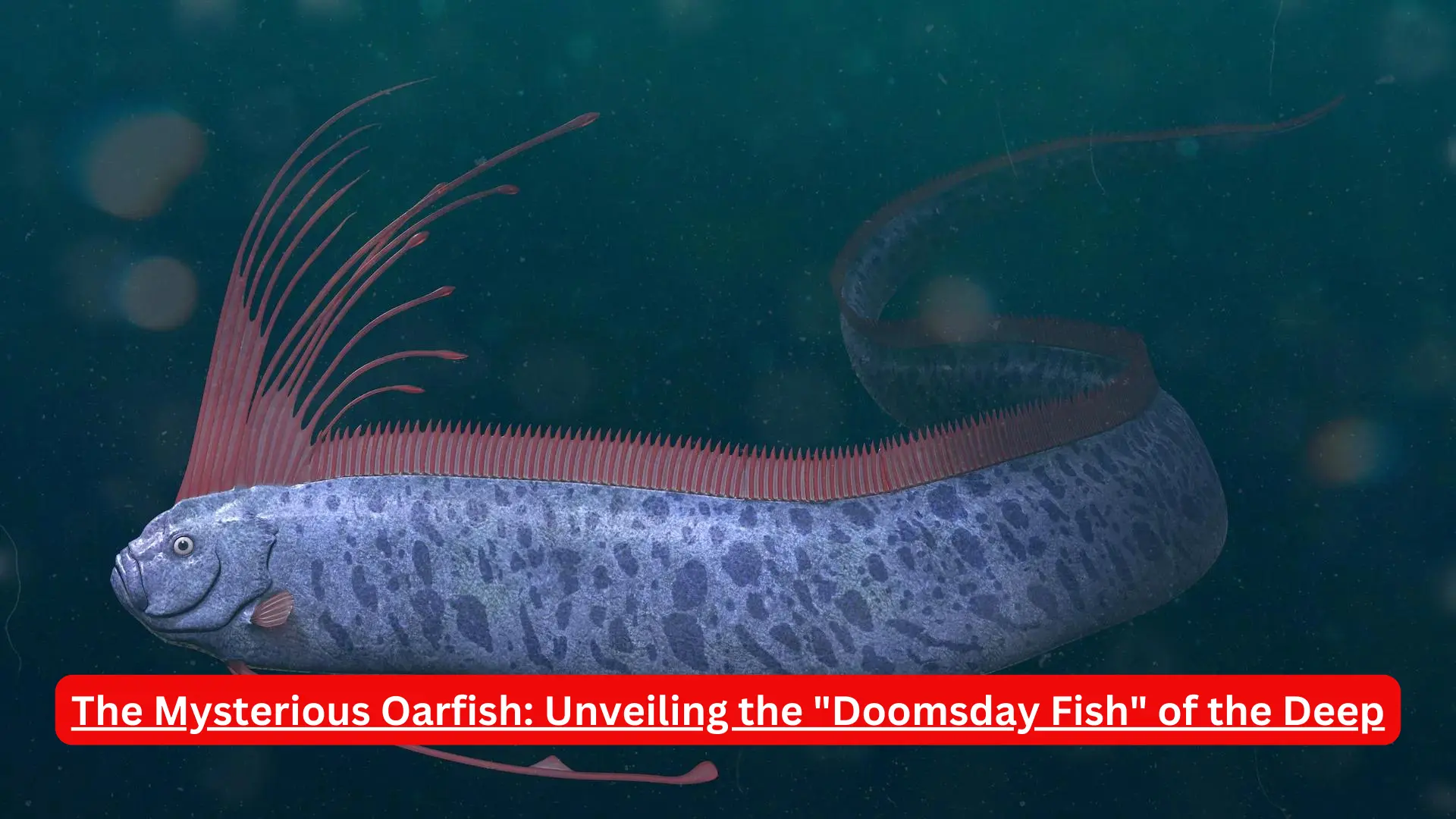The ocean, vast and mysterious, has always held secrets beneath its waves. Among these secrets is the oarfish, a creature that has captivated human curiosity for centuries. Often referred to as the “Doomsday Fish,” this elusive giant of the deep has been linked to numerous myths and legends, particularly those related to natural disasters. But what is the truth behind this enigmatic sea dweller? In this article, we delve deep into the biology, behavior, and the fascinating folklore surrounding the oarfish.
Oarfish: The True Giant of the Deep
The oarfish (Regalecus glesne), also known as the giant oarfish, is the longest bony fish in the world, capable of reaching lengths of up to 36 feet (11 meters) or more. Unlike most deep-sea creatures that dwell in the abyss, the oarfish is known to inhabit relatively shallow waters, ranging from the surface to depths of around 200 meters. This incredible fish is characterized by its long, ribbon-like body, a silvery sheen, and a bright red dorsal fin that runs along the length of its body, giving it a striking appearance.
Biological Features of the Oarfish
The oarfish’s body is adapted to life in the open ocean. Its elongated form allows it to swim gracefully through the water with minimal resistance. The fish’s skin is scaleless, and its mouth lacks the typical large teeth found in many other deep-sea predators. Instead, the oarfish feeds on small plankton, crustaceans, and tiny fish, using its gill rakers to filter food from the water.
One of the most fascinating aspects of the oarfish is its reproductive behavior. Oarfish are known to spawn in the open ocean, releasing their eggs into the water, where they drift with the currents. The larvae are small, planktonic creatures that eventually grow into the massive adults we associate with the species.
Myth and Legend: The Oarfish as the “Doomsday Fish”
Throughout history, the oarfish has been the subject of numerous myths and legends, particularly in East Asia. The oarfish is often seen as a harbinger of doom, with sightings of the fish being linked to impending earthquakes and tsunamis. This association is primarily due to the fish’s tendency to appear near the surface or wash ashore before seismic events.
The Science Behind the Myth
While the oarfish’s connection to natural disasters might seem far-fetched, some scientists believe there may be a grain of truth to these ancient beliefs. Oarfish, being deep-sea dwellers, are highly sensitive to changes in their environment. It is hypothesized that seismic activity, such as underwater earthquakes, could disrupt their natural habitat, forcing them to migrate to shallower waters or even strand themselves on beaches.
However, it’s important to note that there is no concrete scientific evidence to support the idea that oarfish can predict earthquakes. The fish’s appearances before such events could simply be coincidental, though the legend continues to persist in popular culture.
Oarfish Sightings: Rare Encounters with the “Doomsday Fish”
Sightings of the oarfish are rare, which only adds to its mystique. The first recorded sighting of an oarfish dates back to 1772 when a specimen was found washed ashore in Scotland. Since then, there have been sporadic reports of oarfish sightings around the world, often sparking widespread media attention.
Recent Encounters and Media Sensation
In recent years, several notable oarfish sightings have occurred, particularly along the coasts of Japan and the United States. These sightings have often been followed by increased public interest and media coverage, with headlines dubbing the fish the “Doomsday Fish” due to its association with natural disasters.
One such incident occurred in 2013 when a giant oarfish was discovered off the coast of Southern California. The fish, measuring 18 feet in length, was found by a group of snorkelers near Catalina Island. The discovery of such a large specimen so close to the shore generated significant media buzz, with many speculating about the potential for an impending earthquake.
Understanding the Significance of Oarfish Strandings
Despite the fear and intrigue surrounding oarfish strandings, scientists caution against reading too much into these events. Oarfish strandings, while unusual, can occur for a variety of reasons, including illness, injury, or disorientation. In some cases, changes in ocean temperature or currents may also play a role in bringing these deep-sea creatures closer to the surface.
It’s also worth noting that oarfish sightings have occurred without any subsequent seismic activity, further emphasizing that while the fish’s appearances are rare and unusual, they are not necessarily a sign of impending disaster.
Conservation and the Future of the Oarfish
Given its elusive nature and the depths at which it resides, the oarfish remains one of the least understood marine species. Conservation efforts for the oarfish are challenging due to the lack of data on their populations, behavior, and habitat. However, as interest in deep-sea exploration grows, so too does our understanding of these mysterious creatures.
The Role of Citizen Science
In recent years, citizen science initiatives have played a crucial role in documenting oarfish sightings. Platforms that allow the public to report and share their encounters with rare marine species have provided valuable data for researchers studying the distribution and behavior of oarfish.
By increasing public awareness and encouraging responsible reporting of oarfish sightings, we can contribute to the conservation of this fascinating species and deepen our understanding of the deep-sea ecosystems they inhabit.
Conclusion: The Oarfish in the Collective Imagination
The oarfish continues to captivate our imaginations, straddling the line between myth and reality. Whether regarded as a harbinger of doom or simply a rare and beautiful denizen of the deep, the oarfish remains an enduring symbol of the mysteries that the ocean holds. As we learn more about this remarkable creature, we are reminded of the vast and largely unexplored world beneath the waves, a world where the oarfish reigns as one of the true giants.

